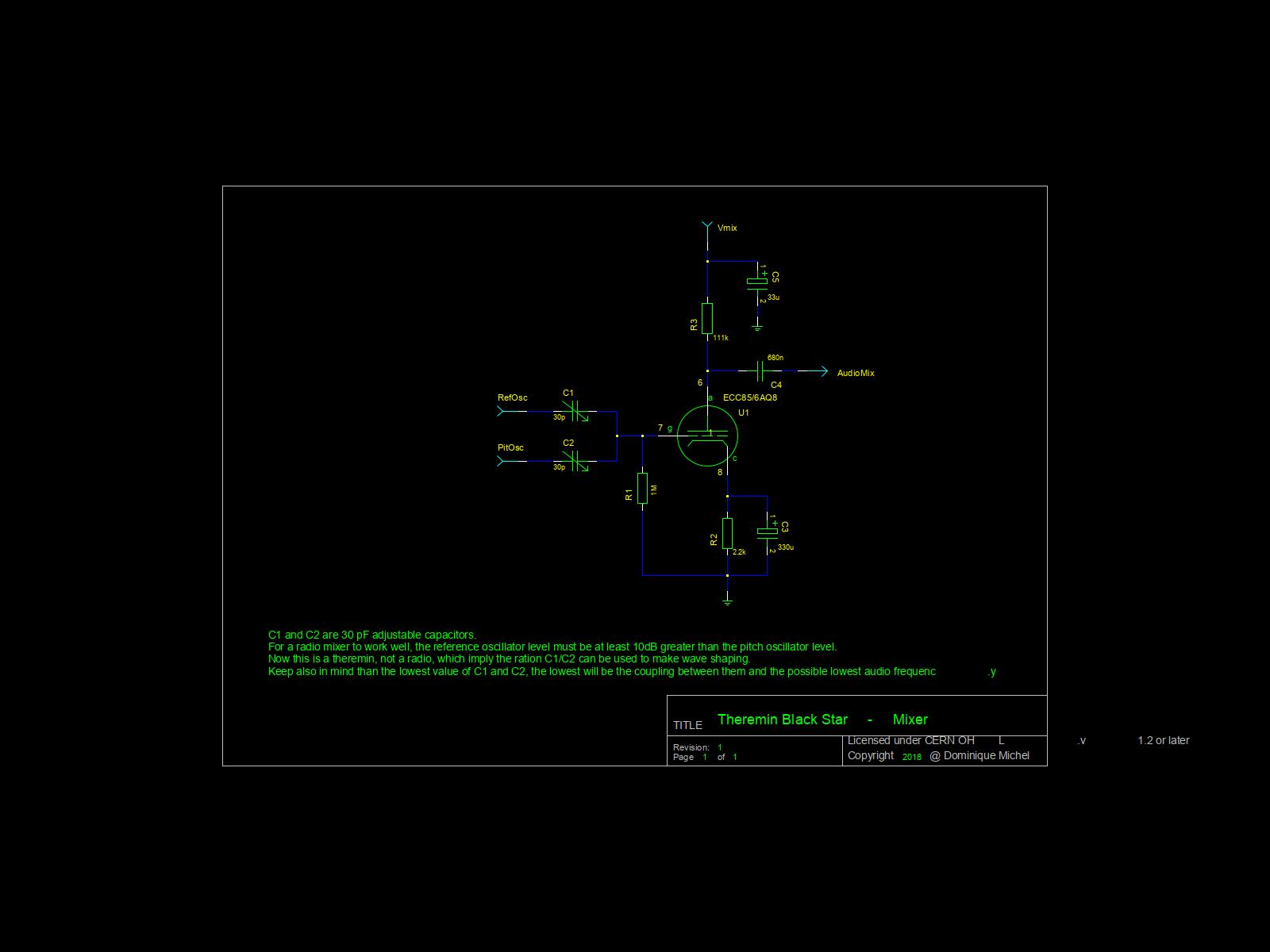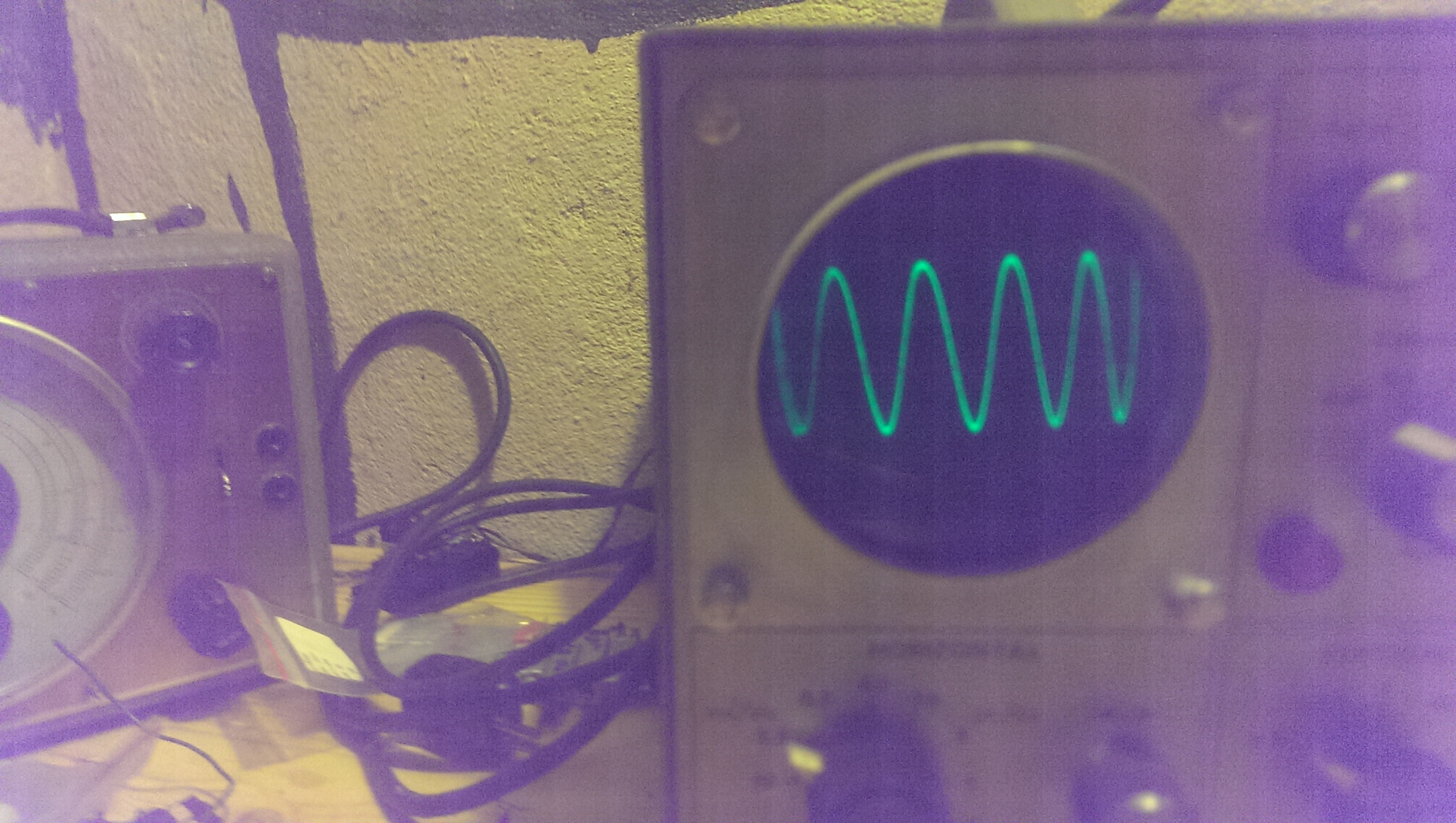The case of the radio is quite big, which imply I wanted to have separated antennas. For what I know (It is the first time I make my own RF oscillators, maybe I missed some oscillator type), only the Clapp and the Franklin give us the possibility to have the antenna and the tuning LC at the other side of a coaxial cable. With the Clapp oscillator, the parasitic condensator of the cable is in parallel with other condensators (C1 and C2 in my schemas), when the Franklin need 2 cables in serie with very small coupling caps, which should be even better. The minus of the Franklin is that it need 2 actives components and 2 cables, when the Clapp is fine with 1 triode and 1 cable. The plus of the Franklin is that it can be made more stable than a quartz oscillator, but with the possibility to change its tuning on the fly with a tuning cap.
I just made some measurement. At 600 Hz, for 2V output at the HP and the VCA at full volume by stopping the volume oscillator, the mixer have a sensibility of 2.4 mV with the volume potentiometer at its minimum (It act more like a gain control) and without feedback on the output stage, and 5.4 mV with feedback. With the gain at its maximum, it give 1.2 and 2.6 mV.
The real sensibility is a little bit more, because the maximum output without visible distortion is around 3V, which give 1.8 mV at gain max and without feedback, which is almost the sensibility of most guitar amplifiers (around 1.2 mV). That volume potentiometer which act like a gain stage is very practical. It let me to chape the wave easily. In combination with the VCA, it is possible to get a distorted wave at all volumes, that without too much noises or hum. The output circuit is very well done because it give me 5.96 V RMS at full saturation, which imply it have a huge dynamic. Which give us 7.1 W EMs on a 5 ohms load (the impedance rating of the transformer, I didn't measured the speaker.) at full saturation and 1.8 W for a 3 volts output. The original speaker sounds good, as most speakers of that era, it is of the high efficiency type. The speaker of the fender champ sounds good too, with more basses and a little bit less trebles.
(As comparaison, a Peavey Mace with a push-pull of 6 x 6L6 is given for 160 W RMS without saturation... and 160 V RMs at full saturation. Half that saturation is made by the power transformer (I measured it, more than 100V of loos on the high tension coil at full volume), which result into a very bad sound at that level of saturation. They are good amplifiers to play jazz, but very bad to play heavy blues or punk. The saturation into the output transformers of a fender champ give a much better sound than the saturation of a main transformer. Don't be too rude with such amplifiers, or you will be in need to change their transformers sooner or later.)




